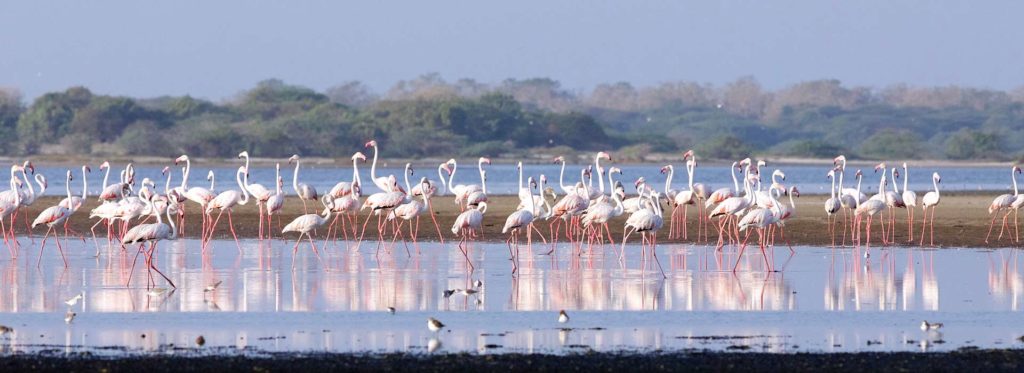The Wildlife and Nature Protection Society (WNPS) has urged the Civil Aviation Authority (CAA) to declare the Mannar wetlands area as a no-fly zone. This is due to the impact of continuous drone operation on the birds in the area.
In a letter addressed to the Director of CAA the WNPS stated, “We appeal to you and the relevant authorities for an immediate declaration of the Mannar wetlands area as a no-fly zone to prevent impending disaster.” The letter goes on to say, “We would also request that the same prohibition be applied to other protected areas and the strict code of conduct be communicated through a campaign, to which the WNPS would extend its support for implementation.”
The letter highlights how operating drones in the bird-enriched Mannar wetlands adversely impacts the birds. “It has been proven that the noise, and the resemblance to aerial predators, cause great anxiety to these species. If they leave, they will never come again, a high price to pay so that the privileged few from Colombo can get their kicks,” mentions WNPS General Secretary Jehan Canagaretna in the letter.
It’s more than just a few aerial shots
Mannar is a haven for migratory birds. In fact, when birds to Sri Lanka, Mannar is usually the first spot. So it comes as no surprise that the Mannar Bird Sanctuary alone has recorded almost 150 different bird species. During the migratory season, the area reportedly hosts over 20,000 birds.
So how is a drone flying a problem? Sure, it’s not like you’re conducting reforestation efforts. But what’s so bad about trying to capture some Insta-worthy shots of wildlife in the beautiful Mannar wetlands? A lot.
The effect of drones has been a problem for birdlife for years. In some parts of the world, birds get territorial and even become physically aggressive. For instance, in Australia, drone delivery company Wing suspended its operations after its drones were attacked by ravens while delivering coffee in Canberra. The suspension was prompted by an ornithological expert’s advice not to conduct drone deliveries in the area during mating season.

In the case of migratory birds, drones tend to disrupt their natural habitat, either due to the noise or the fact that the tech sometimes resembles aerial predators. So, when flocks of birds like the flamingoes, for example, are prompted to relocate it translates to a number of problematic outcomes. This ranges from feeding availability, protection from predators to changing migratory patterns. A 2020 study by the British Trust for Orthinology even states that increasingly improving drone technology is only making the situation worse.
The danger here in Mannar is that the continuous operation of drones has already pushed birds more inland. Wildlife authorities claim that if this keeps up, the birds will continue to move up north, eventually out of the country.
Will Mannar be declared a no-fly zone?
Technically the area in question is a high-security zone. But the WNPS alleges that visitors to Mannar would fly their drones at low altitudes, which only makes matters worse for the wildlife.
The current procedures dictate that any drone weighing over 200g needs to seek CAA approval when flying in public places. According to Gp. Cpt. Dushan Wijesinghe, Spokesman for Sri Lanka Airforce, the process is to reach out to the Defense Ministry first. This request then gets forwarded to the Chief of Defence Staff office and the Air Force. If the area in question pertains to Colombo and its suburbs, Air Force personnel would accompany the drone operator.
In this regard, declaring the Mannar wetlands as a no-fly zone would mean that drones can’t be operated under any circumstance in the vicinity. Whether the WNPS appeal translates to such a restriction in place, only time will tell.




GIPHY App Key not set. Please check settings